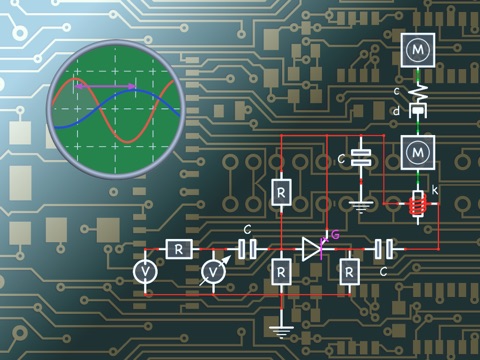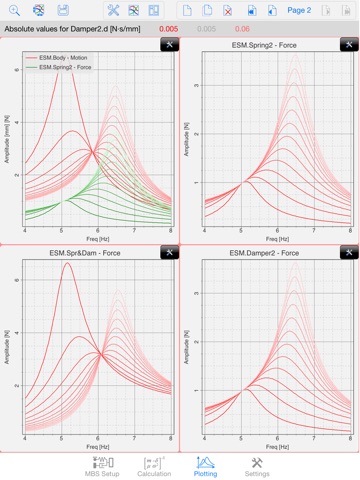
Electric Circuit Dynamics app for iPhone and iPad
Developer: Simone Fritz
First release : 22 Aug 2014
App size: 20.78 Mb
Refresh your physics lessons about electric circuits. Already with few components, it was very complicated and time consuming to compose Kirchhoffs laws: first to add the currents at all nodes of the circuit and then searching the loops and add up the voltage drops. Next, the ac-voltage source was introduced and equations filled pages to draw a Nyquist- or Bode-plot.
This app will do this on a finger tip. You can build your circuit on a construction frame by dragging electronic components from the toolkit. In the first set, the basic elements like resistors, conductors, inductances and transformers are available as well as sources and measurement devices. Additional you can combine the electric circuit with mechanic systems, consisting of masses, springs, dampers and so on.
The analyses of the dynamic system is done in the frequency domain, where you can see dynamic behavior of the complete system if form of damped and undamped natural frequencies with the corresponding current flows and voltage drops in the components or the motions of the mechanic parts. The results are visualized as Bode plots or Nyquist diagrams.
There are some more features to analyze and understand the dynamics of the system. Parameter variations as an offline or online process will help you to get an impression of the influence of each system parameter. Offline variations will solve the equations for a set of changing parameter values and visualize the results in form of a band of lines. Using the online variation you can change the value of parameter by sliders and the equations are solved instantaneously und the plot are updated right away. With this tools you get a deep understanding of the behavior of the system and the influence of each parameter.
Often it is interesting to compare two models with a different refinement. With an InApp you can do this with a finger tip. By duplicating a model it is possible to set parameter dependencies between the subsystems, so when you change the parameter in one subsystem the parameter of the other system also will be changed. Also the plots will be extended automatically to see a comparison of the models in one plot.
If you have any questions, troubles or suggestions, please use the contact formula in the app. This way its possible for me to give you a feedback.



